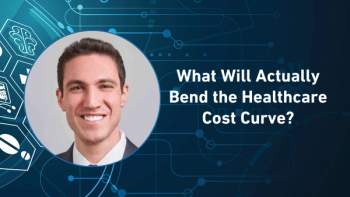
- Pharmaceutical Commerce - January/February 2010
Bill Gates: 'Vaccines Are A Miracle'
. . . Society underinvests in innovation in general but particularly in two important areas. One area is innovations that would mostly benefit poor people—there is too little investment here because the poor can’t generate a market demand. The second area is sectors like education or preventative health services, where there isn’t an agreed-upon measure of excellence to tell the market how to pick the best ideas.
Vaccines are a miracle because with three doses, mostly given in the first two years of life, you can prevent deadly diseases for an entire lifetime. Because the impact is so incredible, vaccines are the foundation’s biggest area of investment—more than $800 million every year—and the return is substantial. We are working to get other donors to put more resources into vaccines because we still have big challenges. The first challenge is to invent them, and the second is to make sure they reach everyone who needs them. Achieving full coverage is hard in poor countries, where cost and delivery are big barriers.
Various innovations can simplify the delivery. Sometimes it’s possible to combine different vaccines into one. A great example of this is the vaccines for diphtheria, tetanus, and pertussis (whooping cough). . . . In 1942 they were combined into a single vaccine, called a trivalent vaccine because it has three active elements. The price of all three doses of this vaccine is now less than 50 cents, and over 77% of children in the poorest countries of the world get all three of the doses they need to be protected. . . .
Even when a vaccine can’t be combined with others, you can still improve distribution by making it free for poor countries, or cheap enough that they can afford to buy it. This has been a key focus for the GAVI Alliance, which we helped create almost 10 years ago. GAVI gives grants to poor countries to improve vaccine coverage and to help pay for new vaccines. . . .
Now the hepatitis B and HiB vaccines have been combined with the trivalent vaccine to create a vaccine with five active elements—a pentavalent vaccine. GAVI’s work in helping to provide both the stand-alone and pentavalent vaccines has raised hepatitis B coverage to 68% of newborns and HiB coverage to 24% of newborns in the poorest countries.
Cost is still a problem. Today a full set of doses of the pentavalent vaccine costs over $8 more than the trivalent vaccine. But as manufacturers produce more vaccine and additional competitors come into the market, the cost premium should drop by half in the years ahead. This is why the global health community has a goal of raising coverage of HiB vaccine to over 80 percent by 2015, which could then save 250,000 lives per year in the poorest countries in addition to eliminating lots of suffering and disability. . .
In last year’s letter, I said that I thought we could get the rotavirus vaccine out to over half of the kids who need it within six years. I still think we can achieve this in the five years we have left, but it is going to be a lot harder than I expected. Many countries have not added a new vaccine for over 20 years. Incredibly, some countries don’t even have a process for deciding whether to add a new vaccine. In others, the process is still there on paper, but no one remembers who is supposed to do what. We avoided this problem with HiB and hepatitis B by creating the pentavalent vaccine, but it won’t be possible to combine rotavirus and pneumococcus with other vaccines . . .
This year the foundation helped launch a new approach to encourage a high-volume, low-cost supply of a pneumococcus vaccine that meets the needs of poor countries. This approach is called an Advance Market Commitment, and it involves a group of donors pledging $1.5 billion to help pay for the vaccine for poor countries. We expect that manufacturers will commit to building factories much earlier than they would otherwise in order to compete for this money. During 2010 the negotiations with manufacturers should come to a conclusion. We believe this will make a big difference in how quickly this vaccine gets to poor children and show how this approach can be applied to other medicines.
> Excerpted from the annual letter from Bill Gates, co-chair of the Bill and Melinda Gates Foundation, released just after the Foundation announced a new, $10-billion grant for vaccine development and distribution. See www.gatesfoundation.org.
Articles in this issue
almost 16 years ago
Medication adherence could get an EHR boostalmost 16 years ago
Improving Outcomes Research Protocolsalmost 16 years ago
Brand Protection Technology Takes a Patient-Communication Turnalmost 16 years ago
OPINION: Will Class-Wide REMS Programs Delay New Opioid Approvals?almost 16 years ago
Coming Togetheralmost 16 years ago
Agenda Set for Spring HPCLC Meetingalmost 16 years ago
Model N extends revenue management process with contract-authoring toolsNewsletter
Stay ahead in the life sciences industry with Pharmaceutical Commerce, the latest news, trends, and strategies in drug distribution, commercialization, and market access.




